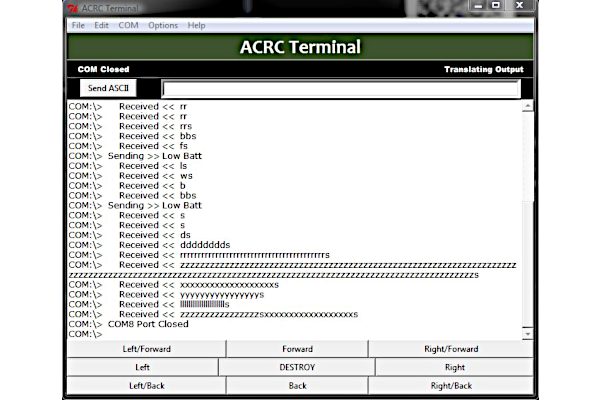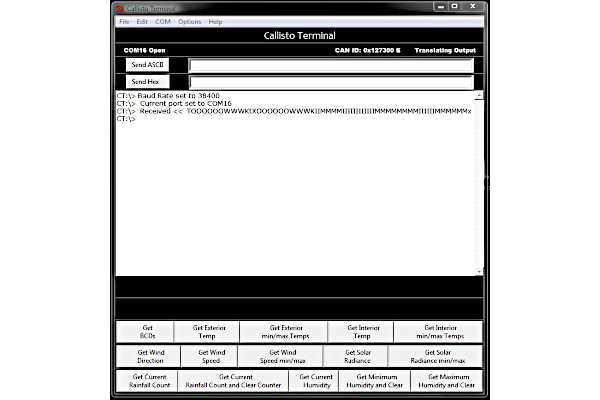ACRC Terminal
Application for the ACRC project
This image (click to enlarge) shows the terminal being used for the ACRC project. It gave us the ability to communicate directly with the microcontroller and/or the Android software. Using some automation scripting, it could also simulate either the ACRC or the smart phone app. It was an invaluable tool for performing latency and battery life tests.



